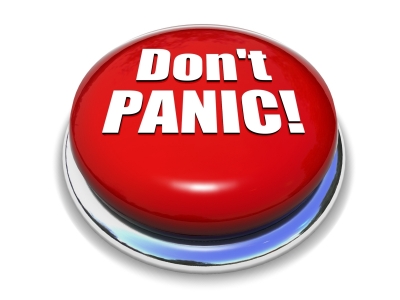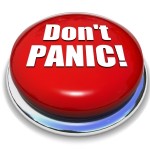Posted on 22 July 2020 Comments (0)
Tags: Brand Impact, Career Builders, Coaching, communication, Confidence, Confidence Builders, Critical Thinking, Culture, Emtional Intelligence, Go to Meeting Presence, Interpersonal skills, Leadership, Leadership Presence, Listening, Presentation Skills, Speaking Skills, Zoom
 Meeting on Zoom, GoToMeeting, or WebEx is difficult. Long meetings are especially challenging. Be sure to set up early for the meeting, having the items you need available. Put away any distractions, such as a cell phone or additional paperwork (no multi-tasking). Keeping engaged will help you connect with those in the meeting. Facial expressions are the best way to ensure a personal connection (smiling and making eye contact directly into the screen). Watch for cues to ensure your message is being heard. Always use mute when you are not talking. Be open to dialogue on Zoom and engage in discussions.
Meeting on Zoom, GoToMeeting, or WebEx is difficult. Long meetings are especially challenging. Be sure to set up early for the meeting, having the items you need available. Put away any distractions, such as a cell phone or additional paperwork (no multi-tasking). Keeping engaged will help you connect with those in the meeting. Facial expressions are the best way to ensure a personal connection (smiling and making eye contact directly into the screen). Watch for cues to ensure your message is being heard. Always use mute when you are not talking. Be open to dialogue on Zoom and engage in discussions.
Posted on 13 September 2018 Comments (0)
Tags: Anna's Posts, Behaviors, Coaching, communication, Critical Thinking, Empathy, Emtional Intelligence, Executive Presence, Honesty, Interpersonal skills, Leadership, Listening, Professional Development, Relationship Building, Speaking Skills, Team Building
 The cooking competition show is about more than just the food. It provides a visual of ways contestants and judges work under pressure to deliver successful products and give constructive feedback. The show that continues to give feedback gems is the Kid’s Championship Baking Show.
The cooking competition show is about more than just the food. It provides a visual of ways contestants and judges work under pressure to deliver successful products and give constructive feedback. The show that continues to give feedback gems is the Kid’s Championship Baking Show.
Duff and Valerie are the judges and it is the way they use the three to one rule that clicks. They look for the three positives and one not-so-positive area to help the contestants achieve success as a baker. The judges balance the fine line on these impressionable young minds. We understand they were chosen for their baking skills, personality, and how they receive feedback.
All us of revert to the child in ourselves when under review and feeling pressured. (Even when we try to toughen up!)
 The challenge when beginning a new leadership role, is to build a new and not destroy the current structure. Yes, destroying seems to be the method these days because the old can appear stagnant. There is a better method of understanding the organization and its players that includes a deep study to determine the next step that will help the organization or team be effective. Creating havoc causes confusion and creates an uncomfortable view which in turns creates a backlash. The cure can be worse than the problem. If you are going to be a destroyer, be sure to have plan B in case the remains cannot be used to move forward.
The challenge when beginning a new leadership role, is to build a new and not destroy the current structure. Yes, destroying seems to be the method these days because the old can appear stagnant. There is a better method of understanding the organization and its players that includes a deep study to determine the next step that will help the organization or team be effective. Creating havoc causes confusion and creates an uncomfortable view which in turns creates a backlash. The cure can be worse than the problem. If you are going to be a destroyer, be sure to have plan B in case the remains cannot be used to move forward.
 Project management means coordinating the time, people and materials needed to accomplish the end goal in the required timeframe. Often, problems arise. It is important to ask the question, what solution can be completed with the least amount of time and effort?
Project management means coordinating the time, people and materials needed to accomplish the end goal in the required timeframe. Often, problems arise. It is important to ask the question, what solution can be completed with the least amount of time and effort?
Recently, in a remodeling project, the new Hunter Douglas cordless solar shade was too wide to accommodate the panels for a cabinet. The shade could not be returned. The issue was a misjudgment by all parties involved. I took a step back and a deep breath without calling anyone names or assigning blame. New shades had to be ordered with a 20% discount. The key was to get the project that everyone could be proud of completed.
 In working with a client experiencing high stress and in a no-win situation, it became clear that a time out was needed for some personal care, a massage in this case. We let all the parties involved know that we would come up with a solution at the end of the week.
In working with a client experiencing high stress and in a no-win situation, it became clear that a time out was needed for some personal care, a massage in this case. We let all the parties involved know that we would come up with a solution at the end of the week.
The client had the authority and the funds to ask team members to take the day off and send in suggestions by email for the client to review for the Friday meeting. The client and all parties needed to take a break from their 24/7 work schedule to ensure the decisions were the best for the project. The project was successful and all parties felt empowered by the outcome.
Posted on 05 April 2018 Comments (0)
Tags: Anna's Posts, Career Builders, Coaching, communication, Culture, Emtional Intelligence, Interpersonal skills, Leadership, Listening, Personal Development, Professional Development, Relationship Building, Team Building
 Understanding cultural differences and similarities helps bridge communications. For example, I am a first-generation Chinese born and raised in Chicago and sometimes work with natural born Chinese (born in China) even though the individual may be in the US for an extended time.
Understanding cultural differences and similarities helps bridge communications. For example, I am a first-generation Chinese born and raised in Chicago and sometimes work with natural born Chinese (born in China) even though the individual may be in the US for an extended time.
We may look and even sound similar, but we think and communicate very differently. I am direct, a distinctly US quality. Individuals from another culture may agree even though they disagree to save face. The main similarity is that we both want to succeed but get there in different manners. To connect and avoid a saving face situation, present a solution in a way that will achieve the main goal.
 Once, in the middle of a heated disagreement, instead of getting into a debate, I used silence. Silence caused the other person to pause. I’m not sure whether the debate was resolved but it did allow space for some discussion around other solutions.
Once, in the middle of a heated disagreement, instead of getting into a debate, I used silence. Silence caused the other person to pause. I’m not sure whether the debate was resolved but it did allow space for some discussion around other solutions.
Silence is wonderful tool in many ways. It creates time to listen. It can control or manage a situation and inject air in the room. Sometimes, a lot of chatter generates too much noise and prevents clear thinking. Silence helps all parties pause and ponder.
Posted on 30 November 2017 Comments (0)
Tags: Anna's Posts, Attitude, Behaviors, Career Builders, Career Killers, communication, Interpersonal skills, Leadership, Listening, Personal Development, Professional Development, Relationship Building, Team Building
 We all have very individualized thinking and communicating processes. In everyday situations, we manage to engage in pleasantries. However, it is in those difficult conversations that we go to our natural internal communication style.
We all have very individualized thinking and communicating processes. In everyday situations, we manage to engage in pleasantries. However, it is in those difficult conversations that we go to our natural internal communication style.
It is critical to know what your style is so it can be effective and not work against us. A way to know your communication style is to mentally keep a log of when stress makes an appearance because that indicates the end of effective communications.
 Recently, a client suggested that asking questions shows ignorance. Smart people ask questions for clarity and to connect to the issue. I like starting the question with a how or a what. The why question only works when you are establishing a reason for the issue. The challenge with beginning with why is that the conversation could go down a rabbit hole or the weeds which may be unproductive.
Recently, a client suggested that asking questions shows ignorance. Smart people ask questions for clarity and to connect to the issue. I like starting the question with a how or a what. The why question only works when you are establishing a reason for the issue. The challenge with beginning with why is that the conversation could go down a rabbit hole or the weeds which may be unproductive.
 More and more folks today wear hearing aids. They are not just for the elderly any more. Be sensitive to those who are using them. You don’t have speak loudly, just directly and succinctly. Speaking loudly makes it sometimes harder to hear. Do not act annoyed or impatient, instead, seek to understand. Wearing hearing aids can be very challenging for the new user.
More and more folks today wear hearing aids. They are not just for the elderly any more. Be sensitive to those who are using them. You don’t have speak loudly, just directly and succinctly. Speaking loudly makes it sometimes harder to hear. Do not act annoyed or impatient, instead, seek to understand. Wearing hearing aids can be very challenging for the new user.
 Meeting on Zoom, GoToMeeting, or WebEx is difficult. Long meetings are especially challenging. Be sure to set up early for the meeting, having the items you need available. Put away any distractions, such as a cell phone or additional paperwork (no multi-tasking). Keeping engaged will help you connect with those in the meeting. Facial expressions are the best way to ensure a personal connection (smiling and making eye contact directly into the screen). Watch for cues to ensure your message is being heard. Always use mute when you are not talking. Be open to dialogue on Zoom and engage in discussions.
Meeting on Zoom, GoToMeeting, or WebEx is difficult. Long meetings are especially challenging. Be sure to set up early for the meeting, having the items you need available. Put away any distractions, such as a cell phone or additional paperwork (no multi-tasking). Keeping engaged will help you connect with those in the meeting. Facial expressions are the best way to ensure a personal connection (smiling and making eye contact directly into the screen). Watch for cues to ensure your message is being heard. Always use mute when you are not talking. Be open to dialogue on Zoom and engage in discussions.

 The cooking competition show is about more than just the food. It provides a visual of ways contestants and judges work under pressure to deliver successful products and give constructive feedback. The show that continues to give feedback gems is the Kid’s Championship Baking Show.
The cooking competition show is about more than just the food. It provides a visual of ways contestants and judges work under pressure to deliver successful products and give constructive feedback. The show that continues to give feedback gems is the Kid’s Championship Baking Show. The challenge when beginning a new leadership role, is to build a new and not destroy the current structure. Yes, destroying seems to be the method these days because the old can appear stagnant. There is a better method of understanding the organization and its players that includes a deep study to determine the next step that will help the organization or team be effective. Creating havoc causes confusion and creates an uncomfortable view which in turns creates a backlash. The cure can be worse than the problem. If you are going to be a destroyer, be sure to have plan B in case the remains cannot be used to move forward.
The challenge when beginning a new leadership role, is to build a new and not destroy the current structure. Yes, destroying seems to be the method these days because the old can appear stagnant. There is a better method of understanding the organization and its players that includes a deep study to determine the next step that will help the organization or team be effective. Creating havoc causes confusion and creates an uncomfortable view which in turns creates a backlash. The cure can be worse than the problem. If you are going to be a destroyer, be sure to have plan B in case the remains cannot be used to move forward. Project management means coordinating the time, people and materials needed to accomplish the end goal in the required timeframe. Often, problems arise. It is important to ask the question, what solution can be completed with the least amount of time and effort?
Project management means coordinating the time, people and materials needed to accomplish the end goal in the required timeframe. Often, problems arise. It is important to ask the question, what solution can be completed with the least amount of time and effort? In working with a client experiencing high stress and in a no-win situation, it became clear that a time out was needed for some personal care, a massage in this case. We let all the parties involved know that we would come up with a solution at the end of the week.
In working with a client experiencing high stress and in a no-win situation, it became clear that a time out was needed for some personal care, a massage in this case. We let all the parties involved know that we would come up with a solution at the end of the week. Understanding cultural differences and similarities helps bridge communications. For example, I am a first-generation Chinese born and raised in Chicago and sometimes work with natural born Chinese (born in China) even though the individual may be in the US for an extended time.
Understanding cultural differences and similarities helps bridge communications. For example, I am a first-generation Chinese born and raised in Chicago and sometimes work with natural born Chinese (born in China) even though the individual may be in the US for an extended time. Once, in the middle of a heated disagreement, instead of getting into a debate, I used silence. Silence caused the other person to pause. I’m not sure whether the debate was resolved but it did allow space for some discussion around other solutions.
Once, in the middle of a heated disagreement, instead of getting into a debate, I used silence. Silence caused the other person to pause. I’m not sure whether the debate was resolved but it did allow space for some discussion around other solutions. Recently, a client suggested that asking questions shows ignorance. Smart people ask questions for clarity and to connect to the issue. I like starting the question with a how or a what. The why question only works when you are establishing a reason for the issue. The challenge with beginning with why is that the conversation could go down a rabbit hole or the weeds which may be unproductive.
Recently, a client suggested that asking questions shows ignorance. Smart people ask questions for clarity and to connect to the issue. I like starting the question with a how or a what. The why question only works when you are establishing a reason for the issue. The challenge with beginning with why is that the conversation could go down a rabbit hole or the weeds which may be unproductive. More and more folks today wear hearing aids. They are not just for the elderly any more. Be sensitive to those who are using them. You don’t have speak loudly, just directly and succinctly. Speaking loudly makes it sometimes harder to hear. Do not act annoyed or impatient, instead, seek to understand. Wearing hearing aids can be very challenging for the new user.
More and more folks today wear hearing aids. They are not just for the elderly any more. Be sensitive to those who are using them. You don’t have speak loudly, just directly and succinctly. Speaking loudly makes it sometimes harder to hear. Do not act annoyed or impatient, instead, seek to understand. Wearing hearing aids can be very challenging for the new user.

